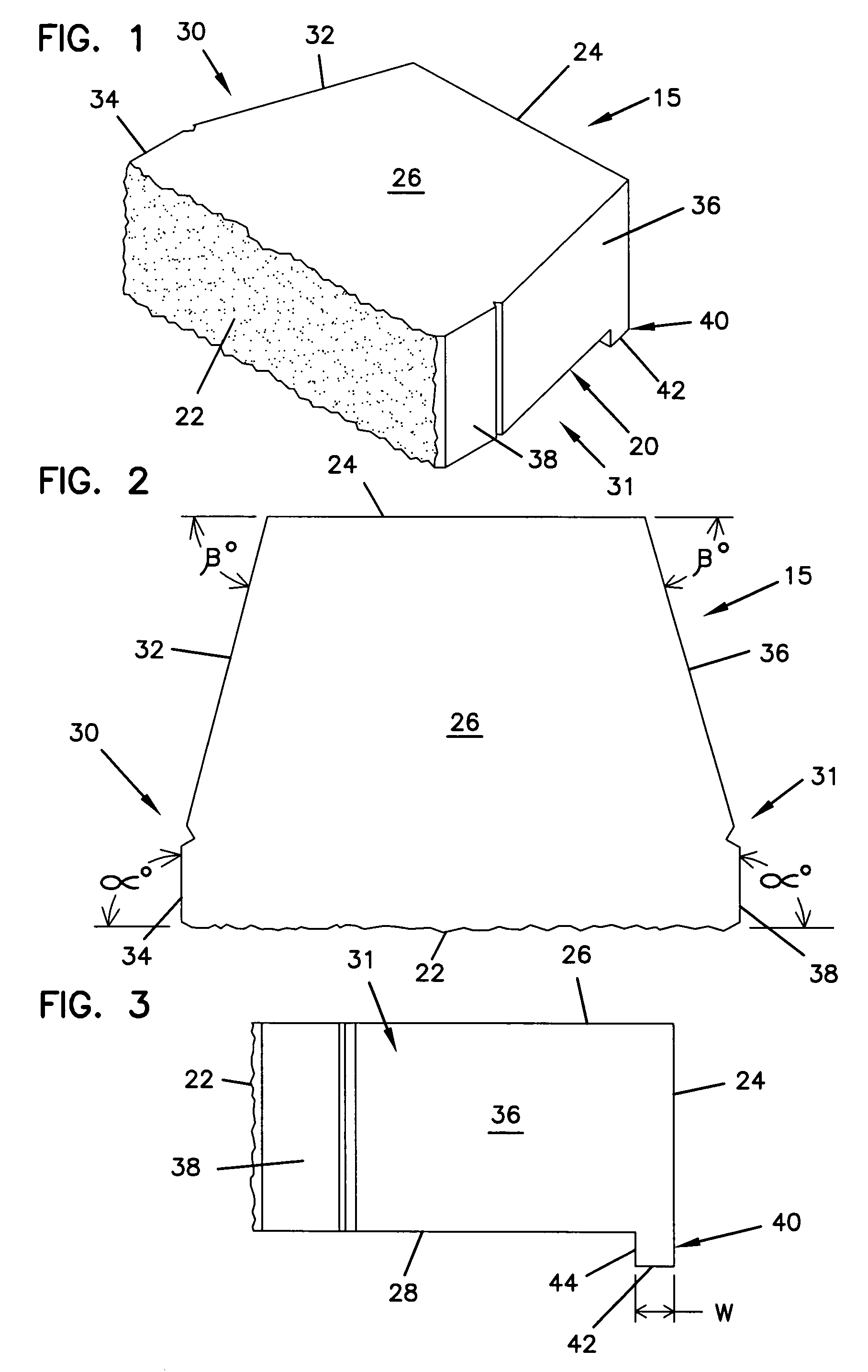Composite masonry block
a masonry block and composite technology, applied in the field of masonry blocks, can solve the problems of reducing the size of the tongue, compromising the structural integrity, and affecting the appearance of the block tongue or lip
- Summary
- Abstract
- Description
- Claims
- Application Information
AI Technical Summary
Benefits of technology
Problems solved by technology
Method used
Image
Examples
Embodiment Construction
[0028] Accordingly, the present invention provides a composite masonry block, structures resulting from this block, a masonry block mold for use in manufacturing the block of the present invention, and a method of using this mold. The present invention provides a mortarless interlocking masonry block having a high structural integrity which may be used to construct any number of structures having a variety of patterns. Moreover, the block of the present invention is made through a process and mold which facilitates and enhances the formation of a high strength block with an interlocking element which also has a high structural integrity and allows the fabrication of various landscaping structures of high strength.
Composite Masonry Block
[0029] Referring to the drawings wherein like numerals represent like parts throughout several views, a composite masonry block 15 is generally shown in FIGS. 1-3 and 4-6. The first aspect of the present invention is a composite masonry block having...
PUM
| Property | Measurement | Unit |
|---|---|---|
| width | aaaaa | aaaaa |
| angle | aaaaa | aaaaa |
| angle | aaaaa | aaaaa |
Abstract
Description
Claims
Application Information
 Login to View More
Login to View More - R&D
- Intellectual Property
- Life Sciences
- Materials
- Tech Scout
- Unparalleled Data Quality
- Higher Quality Content
- 60% Fewer Hallucinations
Browse by: Latest US Patents, China's latest patents, Technical Efficacy Thesaurus, Application Domain, Technology Topic, Popular Technical Reports.
© 2025 PatSnap. All rights reserved.Legal|Privacy policy|Modern Slavery Act Transparency Statement|Sitemap|About US| Contact US: help@patsnap.com



